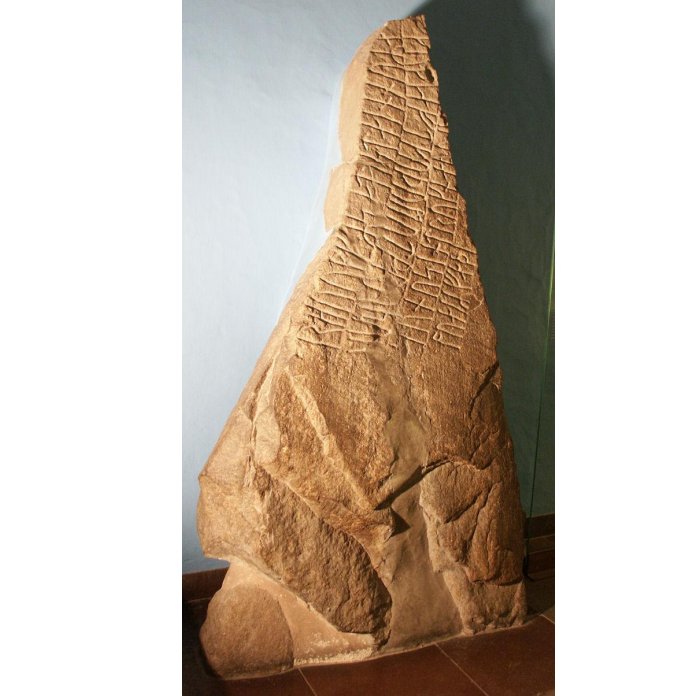How Did Vikings Worship Their Gods?
Ellen Lloyd - AncientPages.com - The Pagan Vikings worshipped several gods and goddesses. However, unlike other ancient civilizations, the Vikings had neither an organized priesthood nor a hierarchy of religious leaders. Temples or other religious buildings were also never used when the Pagan Vikings paid tribute to the Norse gods.
So, how did the ancient Vikings worship their gods?
Nature played an important religious role in the lives of Vikings and Norse people. credit: Adobe stock - Nejron Photo
During the Pagan Viking age, it was a common practice in express ones’ respect to the Norse gods according to local customs. This was, in most cases, done on farms. The farmer and his wife led many everyday rituals.
It was always important for the Vikings to be on good terms with the gods. To ensure this, they made “blót” sacrifices. The blot was an important social and religious event, and the Chief was the master of the ceremony. It was an exchange in which people sacrificed to the gods in order to get something back in return. For example, this might be the gods’ goodwill regarding weather, fertility, or luck in battle.
The Vikings gathered for a feast. Sacrifices were made, and the sacred mead flowed freely.
Odin captures Mead of Poetry by Emil Doepler (1900).
All drank in honor of the dead and held a memorial "for the good year and peace". Singing songs and reading poems honoring the gods and ancient heroes was also an important part of the ceremony.
One of the most comprehensive descriptions of a blot sacrifice in the North can be found in Hakon the Good’s Saga, which was written by the Icelander Snorri Sturluson in the 1200s. In his saga, Snorri writes that Sigurd Håkonsson was a very generous man and supplied the whole feast, which he was long remembered for.
Rune stone from Helnæs on Funen. Many rune stones were erected in memory of powerful men. Credit: National Museum of Denmark
It is believed that there were four fixed blot sacrifices a year at the following times: the winter solstice, the spring equinox, the summer solstice, and the autumn equinox. The Vikings also held additional blot sacrifices, for example, if a crisis arose that required help from the gods.
Farms were not the only places used to honor the Norse gods. The Vikings also used certain sacrificial sites because they believed that there was particularly strong contact with the gods at these locations. In Denmark, archaeologists have discovered places such as Tissø in West Zealand and Tyrseng at Viby in Jutland. These were named after Thor, the Norse God of war.
There are also places in Denmark that are named after the great Norse god Odin. However, the Vikings did not use Odin’s name indiscriminately. It was reserved for places of special significance. Onsholt in Aarhus is one such place. Onsholt is a shortening of Odin’s Holt, which means ”Odin’s Wood”
Updated on March 13, 2024
Written by - Ellen Lloyd – AncientPages.com
Copyright © AncientPages.com All rights reserved. This material may not be published, broadcast, rewritten or redistributed in whole or part without the express written permission of AncientPages.com
More From Ancient Pages
-
 Rare 2,700-Year-Old Seal Of Biblical King Jeroboam II’s Servant Confirmed Authentic
Artifacts | Jan 18, 2021
Rare 2,700-Year-Old Seal Of Biblical King Jeroboam II’s Servant Confirmed Authentic
Artifacts | Jan 18, 2021 -
 Rapa Nui’s Population: Growth And Decline – Lesson For Our Future?
News | Sep 4, 2020
Rapa Nui’s Population: Growth And Decline – Lesson For Our Future?
News | Sep 4, 2020 -
 Thousands Of Remarkable Megaliths On The Sumba Island
Featured Stories | Aug 30, 2017
Thousands Of Remarkable Megaliths On The Sumba Island
Featured Stories | Aug 30, 2017 -
 Forgotten Richly Decorated Rock-Cut Cave Churches Of Goreme And Cappadocia
Featured Stories | Dec 27, 2018
Forgotten Richly Decorated Rock-Cut Cave Churches Of Goreme And Cappadocia
Featured Stories | Dec 27, 2018 -
 Bouboulina: Heroine, Wealthy Widow And Shipowner Who Commanded A Greek Fleet Against The Ottoman Empire
Featured Stories | Aug 30, 2019
Bouboulina: Heroine, Wealthy Widow And Shipowner Who Commanded A Greek Fleet Against The Ottoman Empire
Featured Stories | Aug 30, 2019 -
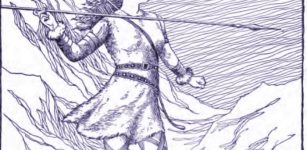 Skadi: Goddess Of Destruction, Giantess And Patron Of Winter Hunters And Skiers In Norse Mythology
Featured Stories | Dec 14, 2017
Skadi: Goddess Of Destruction, Giantess And Patron Of Winter Hunters And Skiers In Norse Mythology
Featured Stories | Dec 14, 2017 -
 Ancient King Who Built A Mysterious Underground City Illuminated By Artificial Lights As Hiding Place
Featured Stories | Apr 16, 2018
Ancient King Who Built A Mysterious Underground City Illuminated By Artificial Lights As Hiding Place
Featured Stories | Apr 16, 2018 -
 Scythians Were Not Always Nomadic Warriors Of The Pontic Steppe In Black Sea Region
Archaeology | Mar 19, 2021
Scythians Were Not Always Nomadic Warriors Of The Pontic Steppe In Black Sea Region
Archaeology | Mar 19, 2021 -
 Legend Of Marguerite de Bressieux: Brave Noblewoman Who Sought Revenge For Sexual Assault
Featured Stories | Mar 29, 2020
Legend Of Marguerite de Bressieux: Brave Noblewoman Who Sought Revenge For Sexual Assault
Featured Stories | Mar 29, 2020 -
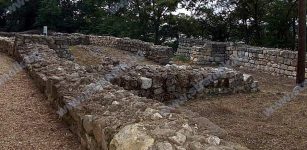 Fortress Wall Of Ancient Roman City Of Sexaginta Prista Discovered
Archaeology | Apr 16, 2016
Fortress Wall Of Ancient Roman City Of Sexaginta Prista Discovered
Archaeology | Apr 16, 2016 -
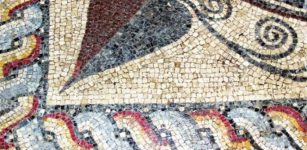 1,800-Year-Old Villa Of Famous Ancient Fisherman Phainos Unearthed In Turkey
Archaeology | Jun 20, 2018
1,800-Year-Old Villa Of Famous Ancient Fisherman Phainos Unearthed In Turkey
Archaeology | Jun 20, 2018 -
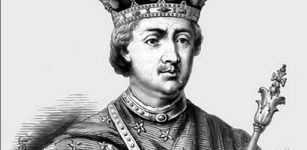 On This Day In History: Henry II Crowned King Of England – On Dec 19, 1154
News | Dec 19, 2016
On This Day In History: Henry II Crowned King Of England – On Dec 19, 1154
News | Dec 19, 2016 -
 Chromium Steel Was First Produced In Ancient Persia
Ancient Technology | Sep 24, 2020
Chromium Steel Was First Produced In Ancient Persia
Ancient Technology | Sep 24, 2020 -
 Evidence Of Beer Drinking 9,000 Years Ago In Southern China Discovered
Archaeology | Sep 1, 2021
Evidence Of Beer Drinking 9,000 Years Ago In Southern China Discovered
Archaeology | Sep 1, 2021 -
 London’s Underground Rivers Were Deliberately Hidden
Featured Stories | Oct 8, 2018
London’s Underground Rivers Were Deliberately Hidden
Featured Stories | Oct 8, 2018 -
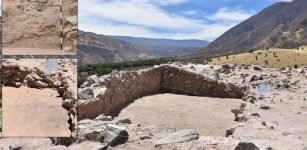 1,200-Year-Old Wari Temple Discovered In Peru
Archaeology | Feb 24, 2023
1,200-Year-Old Wari Temple Discovered In Peru
Archaeology | Feb 24, 2023 -
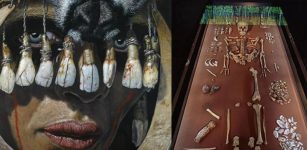 DNA Study Sheds New Light On The Mysterious 9,000-Year-Old Shaman Burial In Bad Dürrenberg
Archaeology | Nov 29, 2023
DNA Study Sheds New Light On The Mysterious 9,000-Year-Old Shaman Burial In Bad Dürrenberg
Archaeology | Nov 29, 2023 -
 Discovery Of Chromosomes Offers Evidence Of Ancient Humans Living In South America Over 18,000 Years Ago
Archaeology | Aug 21, 2022
Discovery Of Chromosomes Offers Evidence Of Ancient Humans Living In South America Over 18,000 Years Ago
Archaeology | Aug 21, 2022 -
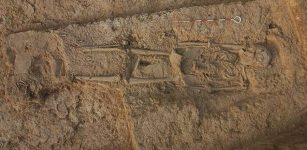 Early Harappan Burial Site With 26 Graves Unearthed In Kutch, Western India
Archaeology | Mar 14, 2019
Early Harappan Burial Site With 26 Graves Unearthed In Kutch, Western India
Archaeology | Mar 14, 2019 -
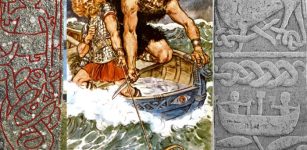 Thor And Tyr Journey To Hymir’s Hall To Steal Huge Cauldron – In Norse Mythology
Featured Stories | Jun 6, 2023
Thor And Tyr Journey To Hymir’s Hall To Steal Huge Cauldron – In Norse Mythology
Featured Stories | Jun 6, 2023



